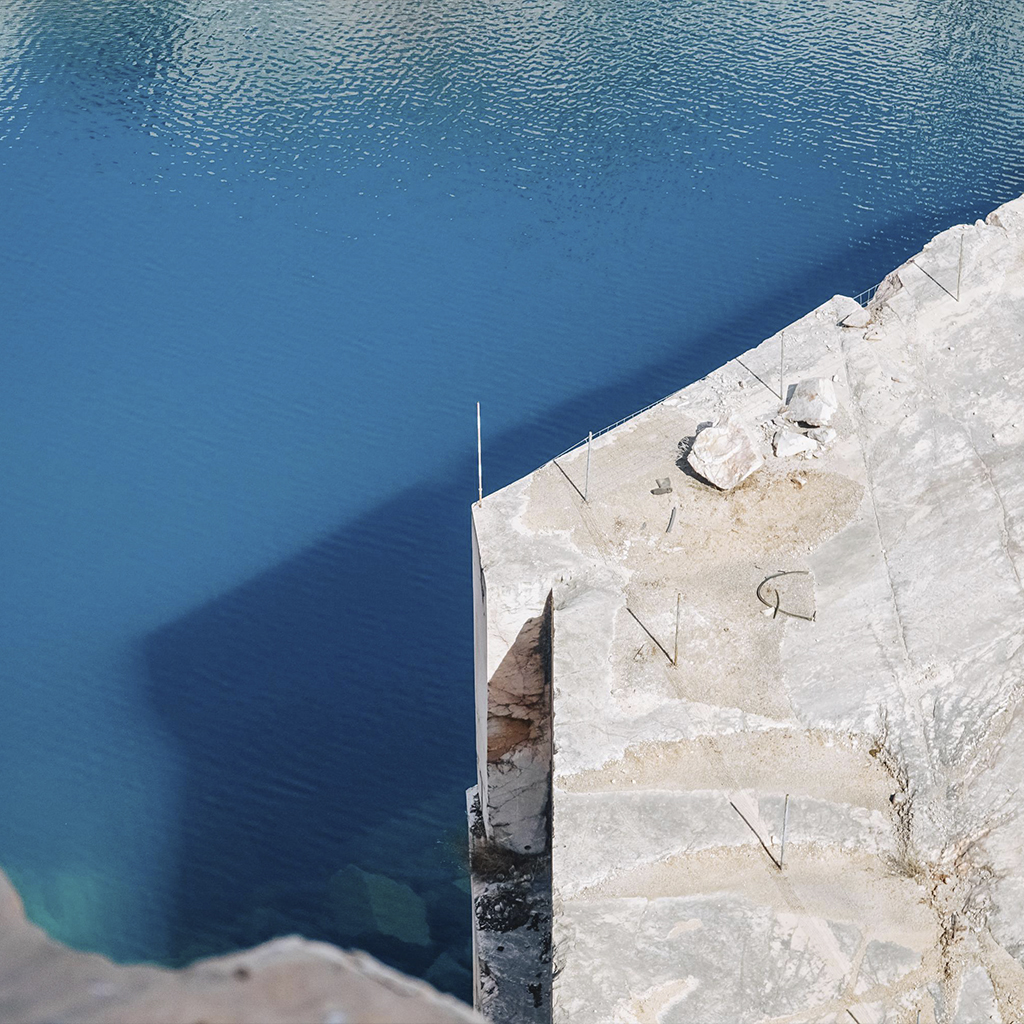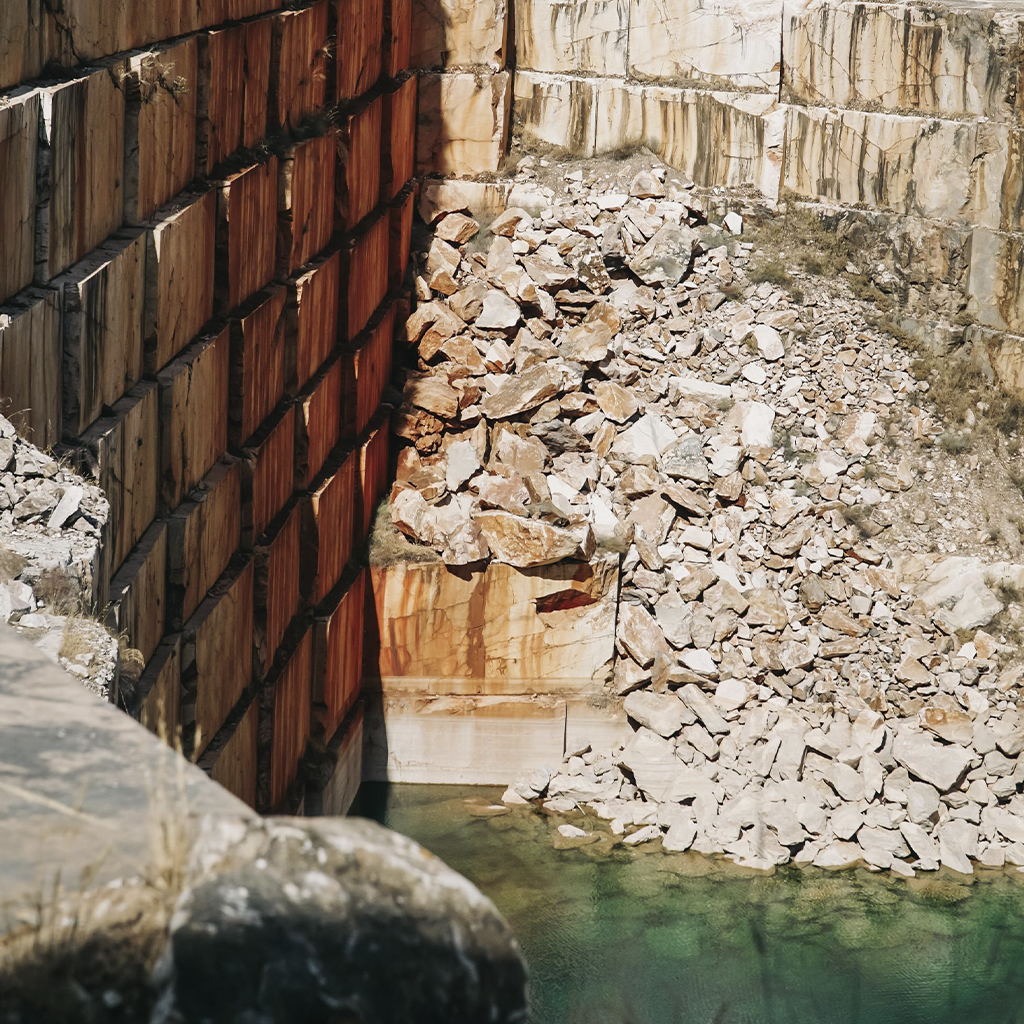The marbles of Alentejo represent one of Portugal’s most valuable geological and cultural heritages. In this third article of our series “Stone Narratives,” we explore the richness, history, and unique characteristics of these noble stones that have adorned constructions across the world for centuries.
The Marble Region
The so-called “Marble Triangle” of Alentejo, formed by the municipalities of Estremoz, Borba, and Vila Viçosa, is one of the most important marble deposits in Europe. This region, known since Roman times, remains a center of excellence in the extraction and transformation of this ornamental stone.


Iconic Varieties of Alentejo Marble
Estremoz White Marble is characterized by its pure, crystalline white tone and fine to medium grain. Its exceptional luminosity and strength have made it a preferred material for sculpture and prestigious architectural elements, a true geological treasure of Portugal.
Rosa Aurora, mainly extracted in the Vila Viçosa area, features a soft pink background with subtle veining, bringing elegance and warmth to the spaces where it is applied.
Ruivina, with its bluish-grey base and irregular white and brownish veins, offers a dramatic and contemporary character, increasingly valued in modern design projects.
Tiger Skin, named after its distinctive pattern, displays a cream to yellowish background with intense veins reminiscent of a tiger’s coat, creating strong visual impact.
Trigaches Marble, extracted in the Beja region, stands out for its predominantly grey tone with bluish nuances and white veins. This variety has been used in important regional monuments and represents a significant part of Alentejo’s geological heritage.
Alentejo Granites: Strength and Character
Beyond marble, Alentejo is also rich in granite formations of exceptional quality. Évora Grey Granite, with its uniform tone and medium grain, is prized for its durability and resistance. Monforte Pink Granite offers a warm and welcoming hue, while Gáfete Yellow Granite, from the Portalegre region, stands out as one of the most distinctive varieties of Alentejo.
These stones have been used over the centuries in monumental constructions — from medieval fortifications to contemporary public buildings — providing not only structural robustness but also a visual identity deeply connected to the region’s landscape.
Stone in the Words of Architects
Alentejo’s natural stone has inspired generations of Portuguese architects. Pritzker Prize winner Eduardo Souto de Moura describes his pragmatic relationship with the material: “My attachment to stone doesn’t come from any vernacular inclination; it began because, at the Braga market, the contractor told me: ‘My friend, there’s no money for concrete — if you want, we’ll build it in stone; we’re full of stone.’”
Meanwhile, Álvaro Siza Vieira explores the poetic dialogue between stone and other materials, as seen in his project “Hell’s Kitchen Bench,” where Portuguese marble establishes “an undeniable dialogue with the building’s polished, refined lines […] creating a symbiotic relationship between these two natural and sustainable raw materials.”
Architect Bárbara Miranda frames the use of stone from an ecological perspective: “When we look at traditional Portuguese architecture — built from earth, wood, fibers, or stone — we realize that sustainable architecture is not a new concept, but one deeply rooted in our history.” However, she cautions: “Since stone is a non-renewable resource, its use must be carefully considered.”
History and Heritage
The extraction of Alentejo marbles and granites dates back to Roman times, when these stones were already used in temples, statues, and public buildings. During the Renaissance and Baroque periods, Alentejo marble gained renewed prominence, being employed in churches, palaces, and monuments throughout the country.
Today, we can admire the legacy of this noble material in masterpieces such as the Jerónimos Monastery, the Mafra Convent, and numerous Baroque churches, where Alentejo marble harmonizes with gilded woodcarving, creating spaces of extraordinary beauty.
Innovation and the Future
Initiatives such as the “Primeira Pedra” project (2016–2022) have explored new possibilities for Portuguese stone. This experimental research program invited dozens of architects, designers, and artists to explore the potential of Portuguese stone, bridging industry and creativity.
The stone extraction industry in Alentejo now faces the challenge of balancing its centuries-old tradition with sustainable practices. Modern extraction and processing techniques allow for more efficient use of resources, reducing environmental impact and extending the lifespan of quarries.
Conclusion
The marbles and granites of Alentejo are far more than ornamental stones — they are witnesses to the geological history of Portugal and to the human ingenuity that, over centuries, has transformed this natural resource into art and heritage. By valuing and preserving this legacy, we not only honor our history but also ensure the continuity of a tradition that continues to shape the cultural and scenic identity of Alentejo.


